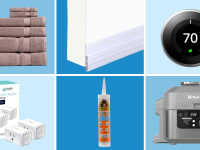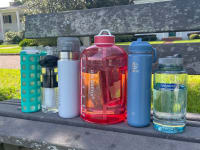Products are chosen independently by our editors. Purchases made through our links may earn us a commission.
Plastics are present in so many aspects of our lives that some scientists are calling the era we live in “The Plasticene.” This is in no small part because of microplastics.
Microplastics are so ubiquitous that a 2019 study showed that much of the global population could be ingesting up to a credit card’s worth of microplastics every week.
Scientists are working to determine just how bad microplastics are for our health, but they are thought to cause hormone problems and certain cancers.
There are steps you can take to avoid microplastics in the home. Proactive measures will protect your health and the health of your family, and help you do your part to curb the global microplastic pollution problem.
What are microplastics?
When they break apart, plastics leave behind bits of matter called microplastics. Some products even release microplastics by design, as microbeads. Microplastics come in many shapes and sizes. Often, their shapes correspond to the larger plastic forms of which they were originally part. These plastics come from all manner of products, and travel through air, water, foods, and even the blood and organs within our bodies.
Many microplastics come in the form of microfibers, which are commonly found in textiles such as nylon, acrylic, and polyester. These fibers are found in fabrics from synthetic fleece jackets, to microfiber towels you might use in your bathroom, microfiber sheets, or the microfiber cloth you’d use to clean a car.
Some companies purposefully add microplastics to products as exfoliating grit. Historically, these microbeads were often found in facial creams and soaps.
In 2015, the U.S. passed a law banning these microbeads, called the Microbead-Free Waters Act of 2015. Regardless of the law, it’s worth double checking that beauty products don’t contain synthetic microbeads.
Plastic particles infiltrate the environment in other unexpected ways. Car tires scuff off plastic as they drive, and are a major source of microplastic pollution outdoors, causing up to 10% of ocean microplastic pollution, and up to 7% of particulate matter found in air pollution.
Likewise, shoe soles shed microplastics outdoors and in the home. One study links shoe microplastic emissions to poor health in plants. With this in mind, it might be a good idea not to wear shoes in the home.
Steps to avoid microplastics in the home
Avoid microplastics in water with a good water filter

The Lifestraw filter pitcher has a glass carafe.
We often ingest microplastics through the water we drink. Getting a good water filter is a simple step that will filter plastic particles from tap water.
Not all water filters are proven to eliminate microplastics. Look for a filter like the glass LifeStraw Home Pitcher, which is certified to filter these plastics.
I use a Big Berkey Filter at home. While Berkey hasn’t been certified to eliminate microplastics, Berkey’s Black Filters have been shown to filter particles below one micron. This is far smaller than most microplastics, making Berkey a good choice.
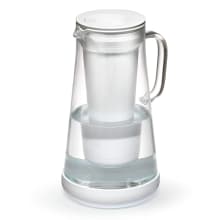
This glass pitcher filter eliminates microplastics.
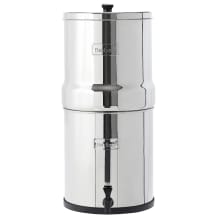
A countertop filtration system with big results.
Get rid of plastic coffee cups and invest in a travel mug

Pick up a travel mug that will replace plastic iced coffee cups.
If you find plastic cups piling up in your car and home, then pick a good travel mug like the Zojirushi stainless-steel mug.
A travel mug will reduce your microplastic exposure, and help replace disposable plastic cups that would otherwise go in the trash. Pick a travel mug made of porcelain or stainless steel for the least exposure.
I recently made the switch to a Bambaw 17-ounce Water Bottle, which I bring with me to the coffee shop for my daily iced coffee. I like how easy it is to strap onto my backpack with a carabiner.
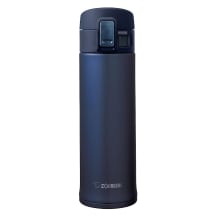
his stainless steel mug exposes you to less plastic and insulates your beverages.
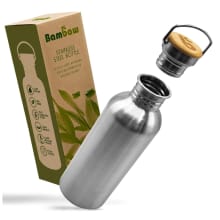
Uninsulated, this metal bottle keeps it basic—and plastic free.
Skip the disposables and invest in a reusable water bottle

Owala’s stainless steel interior will reduce your plastic exposure.
Our favorite water bottle is the stainless-steel lined Owala. You’ll drastically reduce your plastic exposure by switching from bottled water to a reusable non-plastic container.
While we recommend a non-plastic water bottle to reduce your exposure, it’s also important to stress that any reusable water bottle (including plastic ones) that replaces disposable plastic bottles, will help reduce global waste.
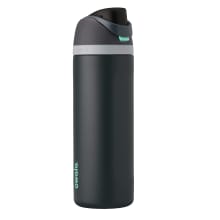
This insulated stainless-steel water bottle swept our tests, it's a great everyday pick with less plastic exposure.
Vacuum up microplastic in your home

Wield a killer cordless vacuum cleaner against the forces of microplastic.
We often associate new furniture with VOC risk. New products often off-gas chemical fumes and pollute our homes.
Synthetic upholstery can also shed microplastic. Often, this particulate matter and dust can accumulate with dander and other sorts of detritus.
Thankfully there’s a simple solution to this dirt and grime: a good vacuum cleaner.
You might choose to employ a robot vacuum to patrol your home while you’re away. Or you might pick up a good cordless vacuum like the Tineco A10 Hero.
Look for a vacuum cleaner with good HEPA filtration, which will ensure that vacuumed microplastics remain trapped inside. Most major brand vacuum cleaners have HEPA filters as their standard.
Whatever you choose, a good vacuum cleaner will rid your rooms of microplastic deposits. Before you start to vacuum, make sure to dust higher surfaces.
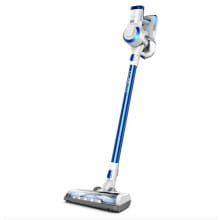
The Tineco is an excellent cordless vacuum that won’t vacuum up your savings.
How to wash microfiber towels, microfiber sheets, and more? There are options

Detain microplastic before it enters wastewater.
Synthetic fibers in clothing are a huge source of plastic pollution. The term microfiber hearkens to these miniscule plastic fibers.
Aftermarket microfiber filters like Girlfriend Collective’s Microfiber Filter can be expensive and difficult to install, but if you’re serious about curbing your plastic pollution footprint, these filters are a surefire approach.
Dryer add-ons aren’t the only approach to dealing with microfiber pollution from laundry, however. Another option is to use a microfiber filtering washer bag like Guppyfriend, which may significantly reduce the amount of microplastic waste emitted by your laundry. Fill it with nylon shorts and microfiber towels and reduce how much fiber escapes into wastewater.
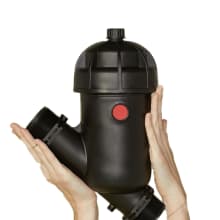
This microfiber trap makes dryers more ecologically friendly.
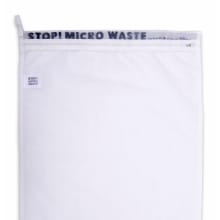
This washing bag contains microplastics shed by synthetic fabrics.
Don’t get microplastics in food—use better containers

Better food storage means less plastic exposure.
I wince a little every time my freshly cooked rice hits the plastic storage container. Plastic food containers offer a pathway whereby not only microplastics, but also plasticizer chemicals can get into food.
Good food storage containers solve this problem. While Pyrex containers do include a plastic lid, the heat tempered glass offers a solid non-plastic storage bowl that won’t expose your food to microplastics or the harmful chemicals that leach from plastic.
While it can be difficult to eliminate plastic packaging entirely, better food containers help create a plastic free home.
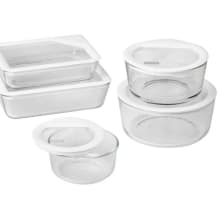
Store food with glass to reduce its exposure to microplastics.
Don’t inhale fine particle plastic—get an air purifier

Blueair defeats particulate matter in the home.
When you plop down on the couch you probably don’t think about plastic dust floating up and getting in your lungs, but fine particle plastic pollution is a real concern. Microplastics have been shown to travel in air with fine particulate matter at the scale of 2.5 microns and less.
Thankfully, the best air purifiers usually have HEPA filters that filter particles down to the 0.3 micron scale.
Our top air purifier is the Blueair Blue Pure 311i Max, which does a great job at pulling fine particles out of the air, even if it isn’t the best at VOCs.

This Blueair purifier does an exceptional job at pulling fine particles out of the air.
Are microplastics harmful?
Microplastics might be everywhere, but science is still researching how harmful these plastic particles are. The evidence is certainly concerning.
Researchers have shown that microplastics are able to cross the blood brain barrier in mammals, permeating our bodies. They have even been found in the placenta of unborn babies.
Studies suggest that microplastics can disrupt hormones, and deposit heavy metals and other toxic compounds into our bodies, leading to increased risk of cancer and other diseases.
While science is catching up on establishing just how bad plastic products and the microplastic pollution they create is for long term human health, there’s enough data to determine that it’s certainly a good idea to proactively limit your exposure to microplastics.

